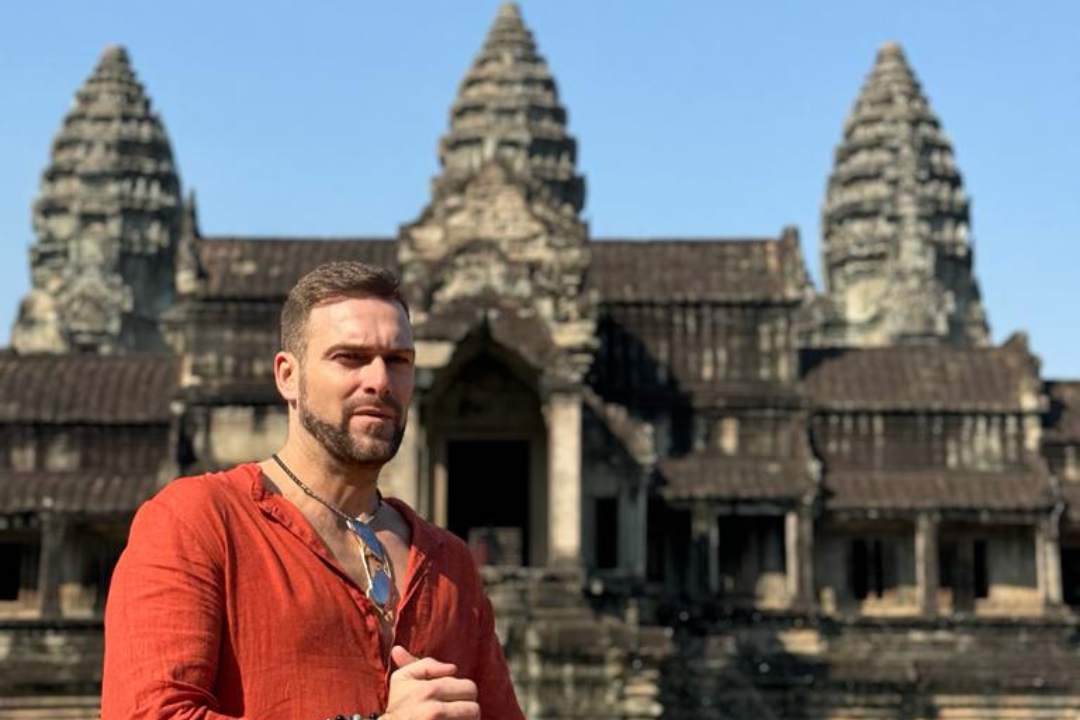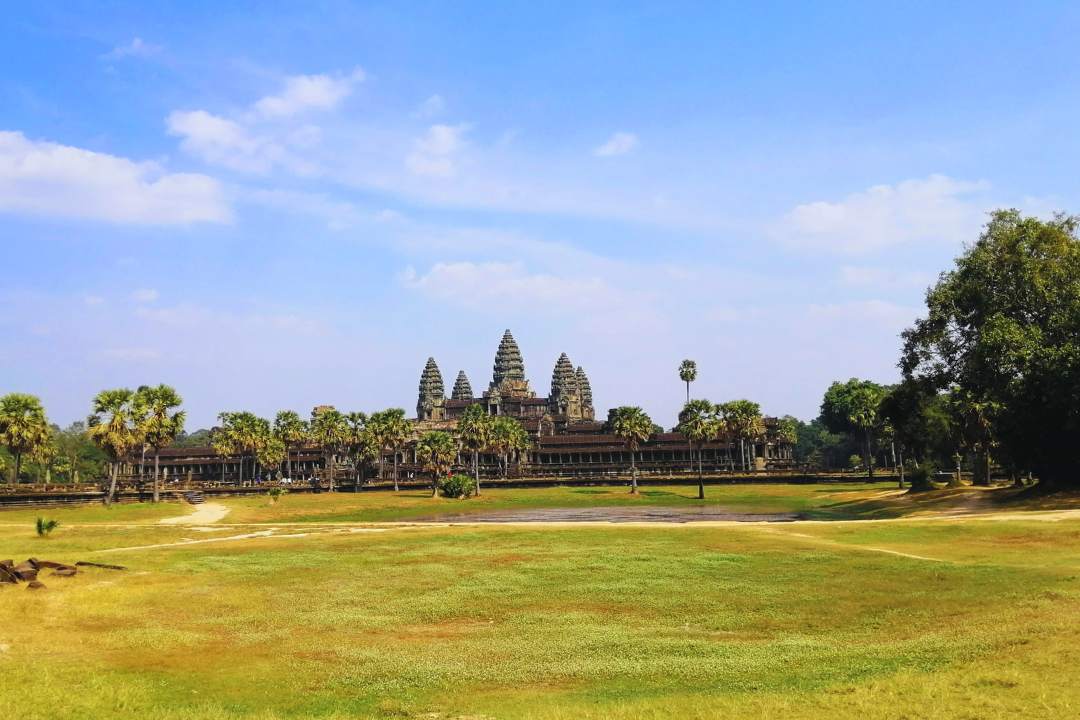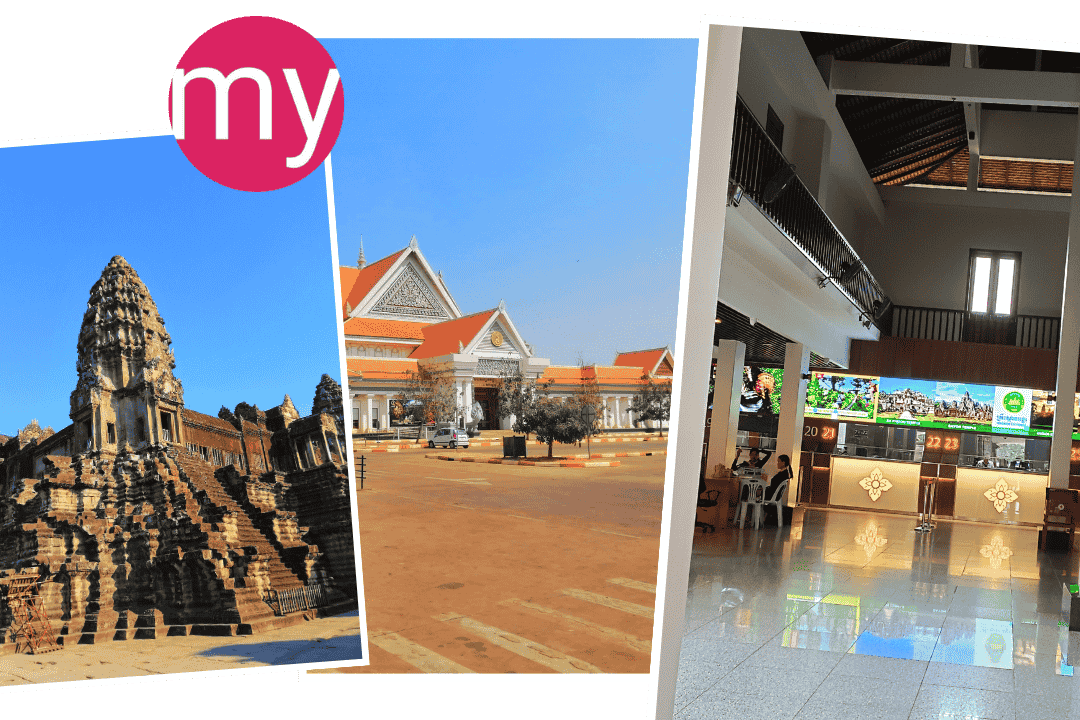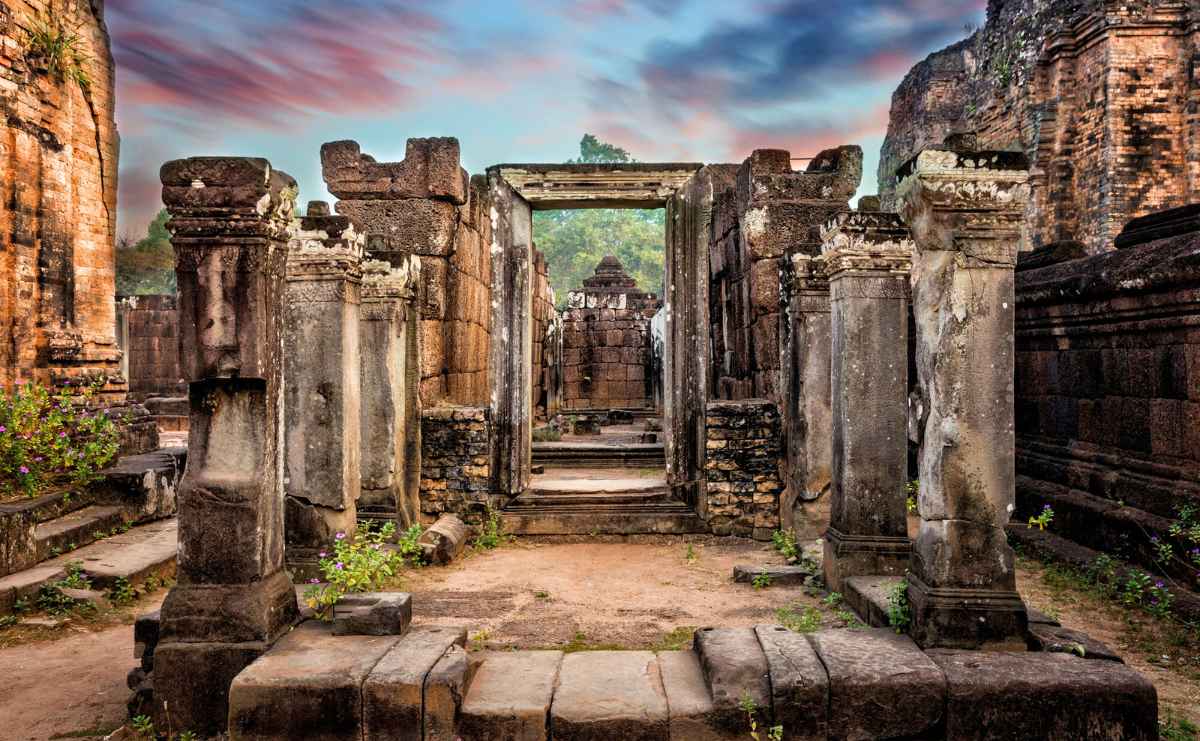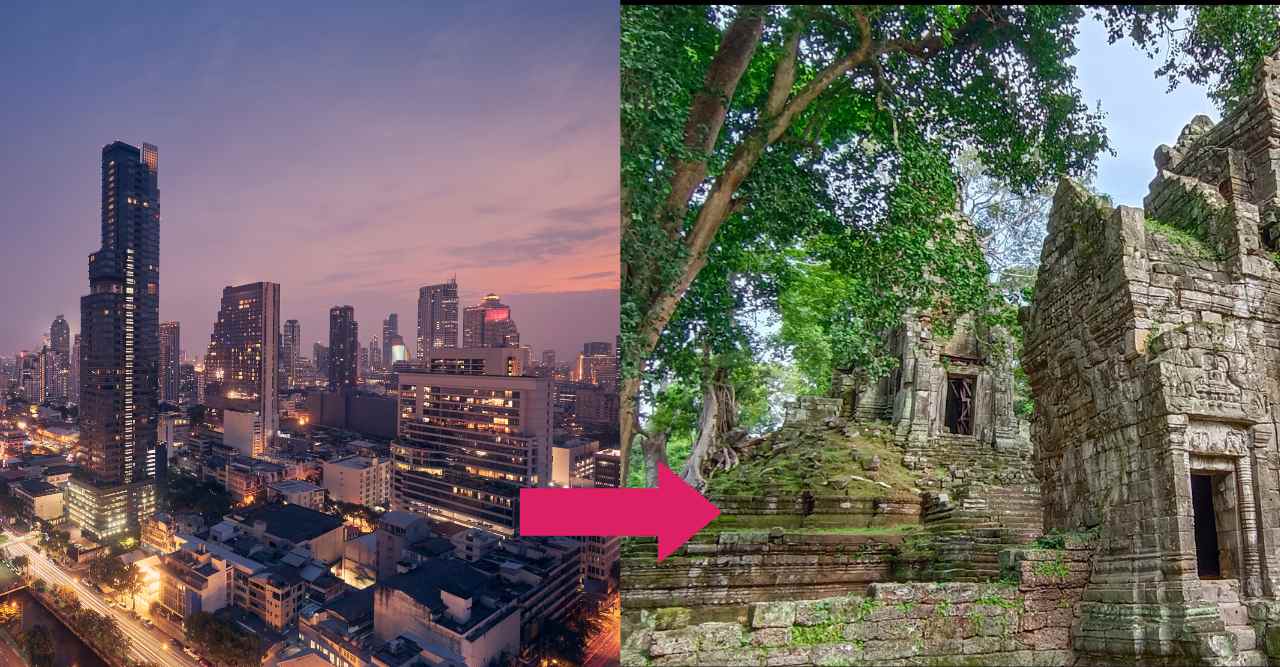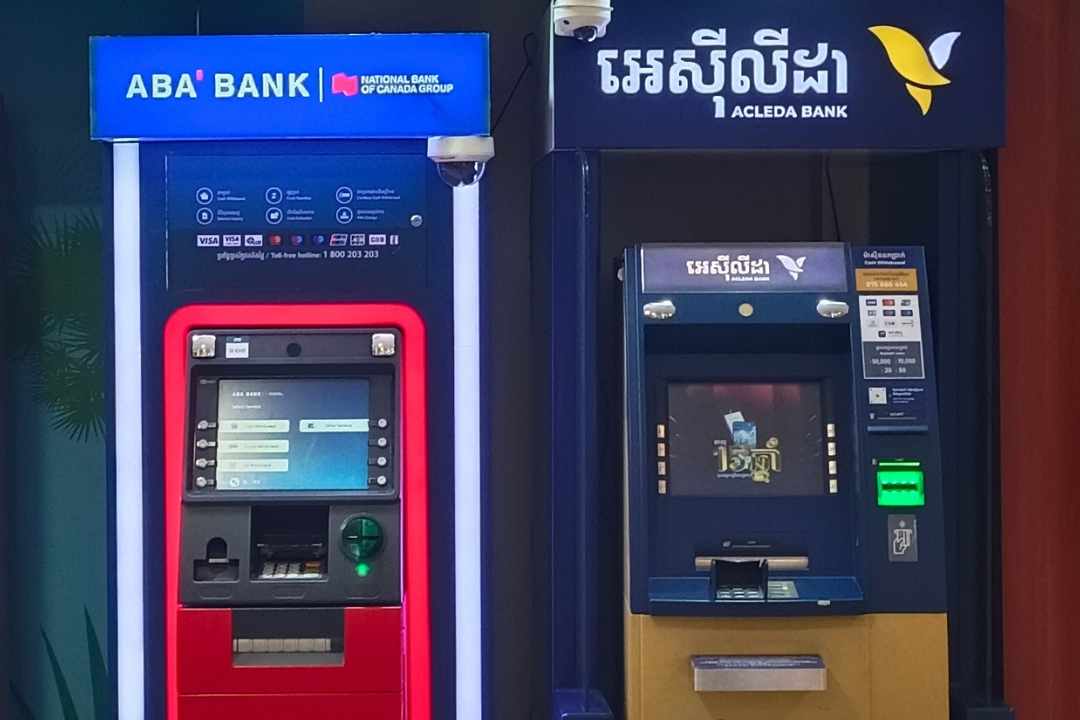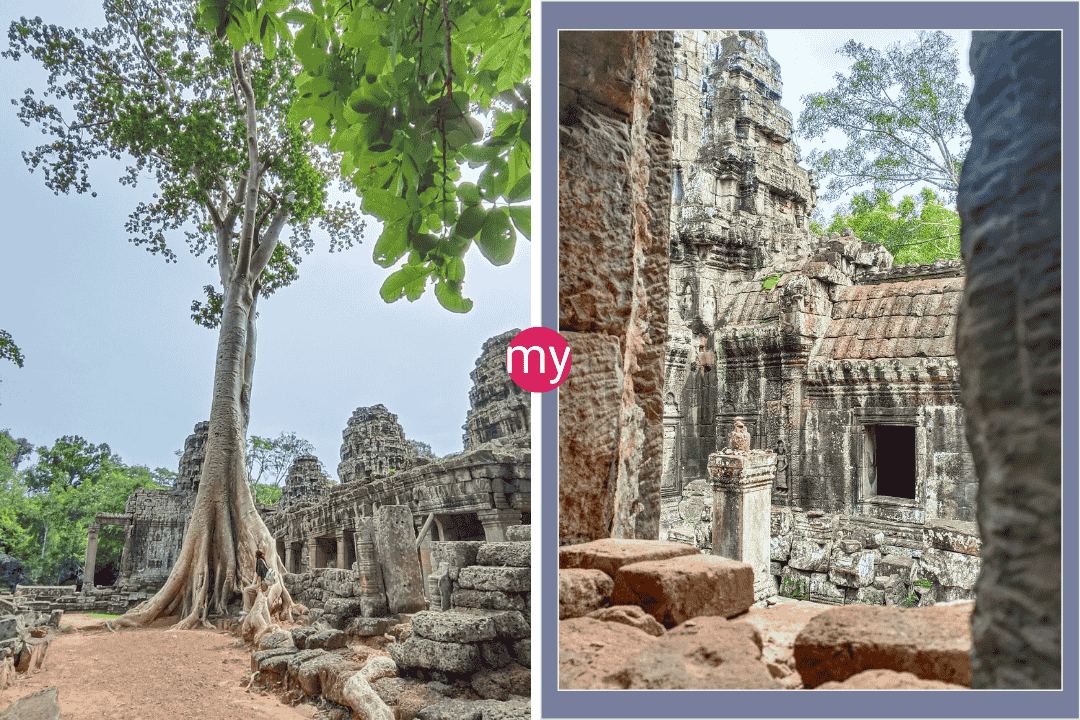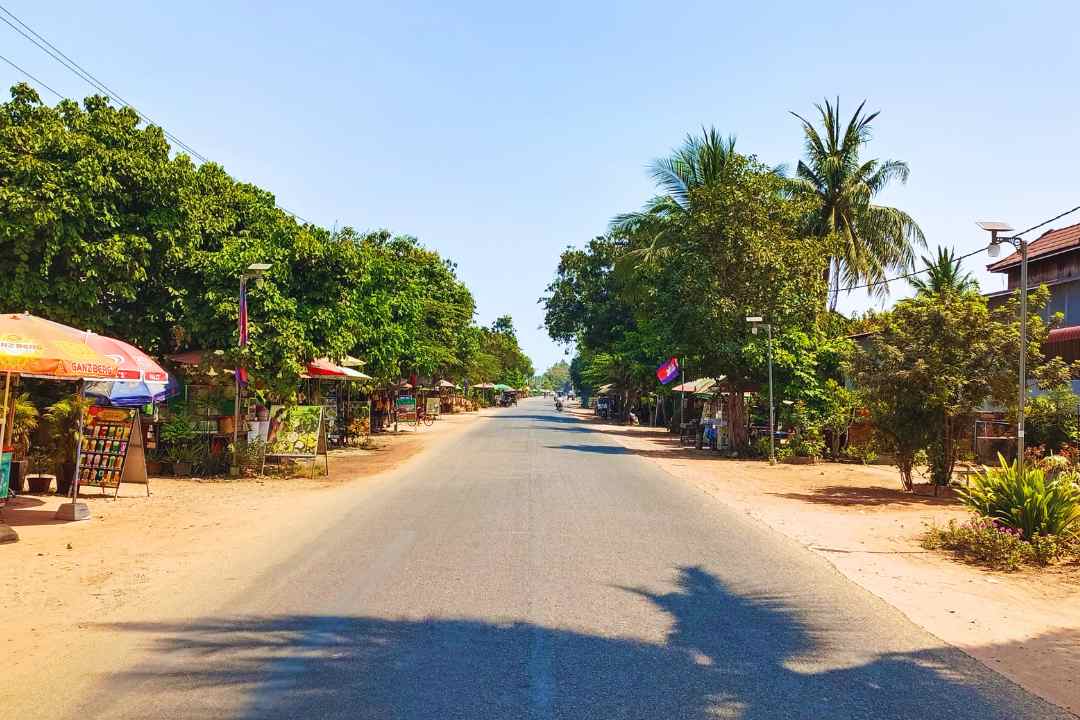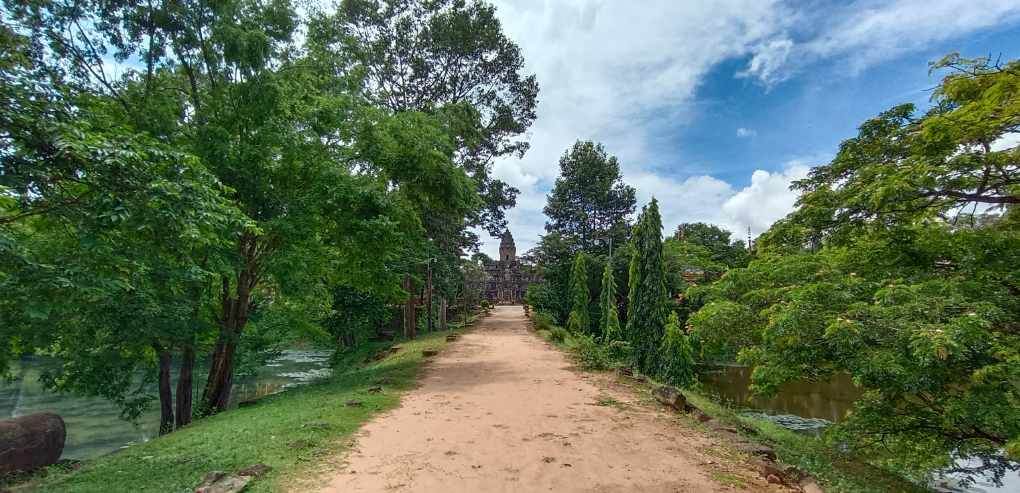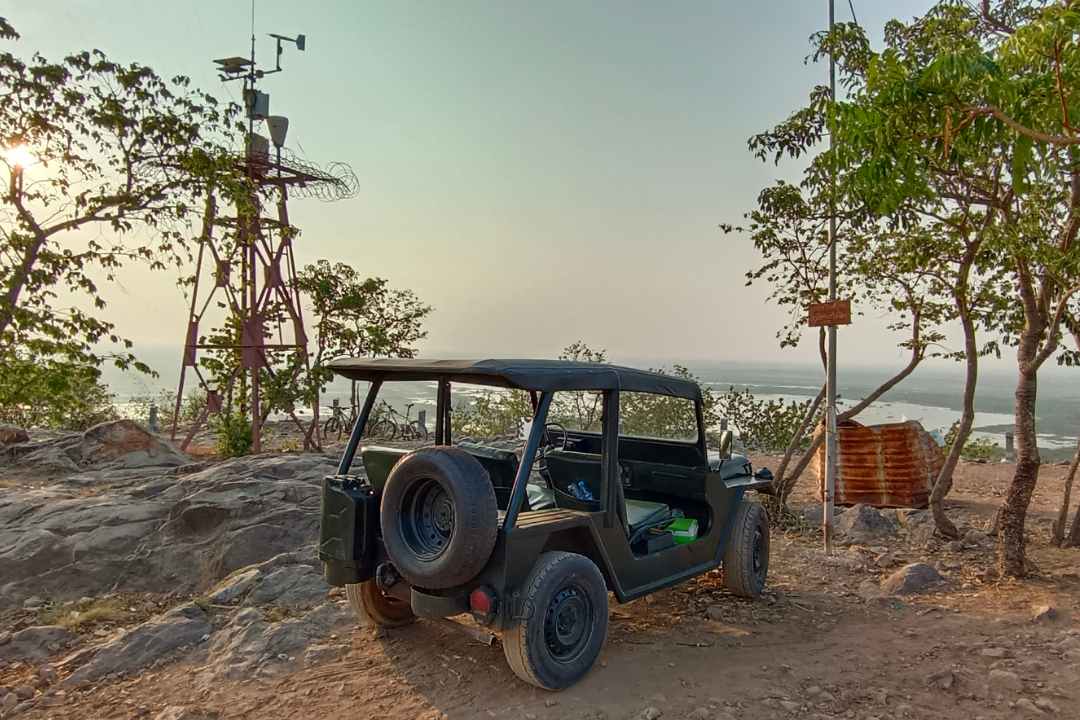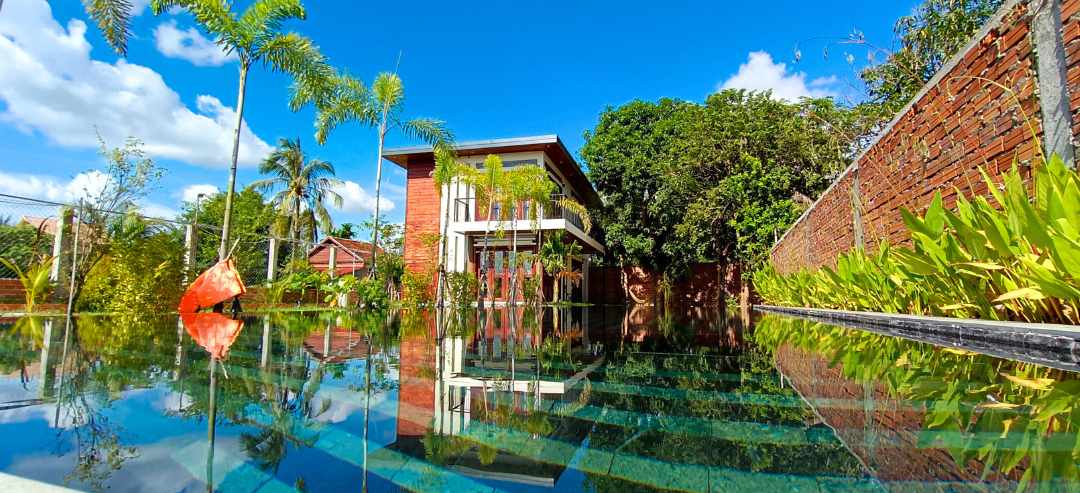Angkor Temple Face-Off - Banteay Samre Temple vs Ta Prohm vs The One You've Never Heard Of!
Banteay Samre Temple vs Ta Prohm vs Eastern Mebon Temple - Which temple wins? One’s wrapped in roots, one’s a quiet giant, and one’s so forgotten it feels like a secret level in a video game—but with giant stone elephants.
The Banteay Samre Temple vs Ta Prohm vs Eastern Mebon Temple debate comes down to three very different experiences: Ta Prohm offers movie-famous tree roots and crowds, Banteay Samre gives you classic Khmer architecture without the chaos, and Eastern Mebon surprises you with giant stone elephants that most tourists never see. Skip the masses at Ta Prohm’s peak hours and you’ll find magic at all three.
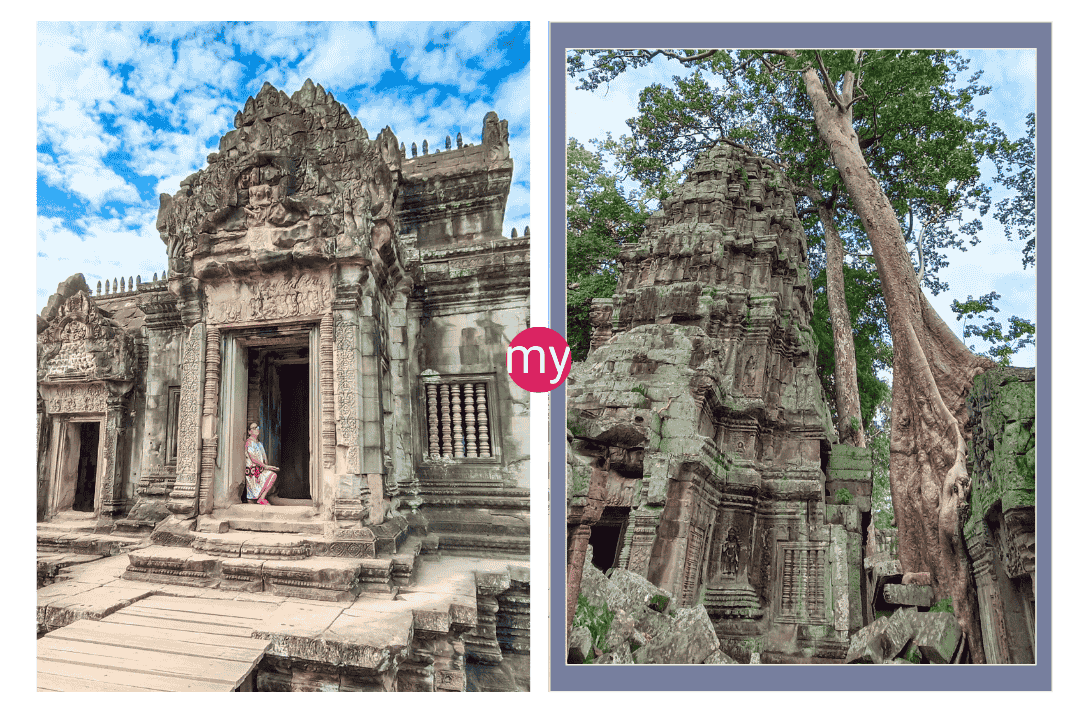
The Ultimate Temple Showdown: Which Angkor Icon Deserves Your Instagram Story (And Why One Might Actually Change Your Life)
Want to know which Angkor temple deserves your camera roll?
Ta Prohm gets all the Instagram love with its famous tree roots. Banteay Samre sits quietly with perfect pink stone work. Eastern Mebon hides massive elephant statues that feel like finding a secret level.
Each temple tells a different story about Cambodia’s past.
Overview: Your Complete Guide to Three Amazing Temples
Banteay Samre Temple vs Ta Prohm vs Eastern Mebon Temple represents the ultimate choice between three distinct Angkor Wat temples experiences in Siem Reap. This comparison covers the most famous jungle temple Cambodia site (Ta Prohm), a perfectly preserved classical temple (Banteay Samre), and a secret-level temple with massive stone elephants (Eastern Mebon).
Each temple offers unique photo opportunities and cultural insights within Angkor Archaeological Park. The main differences include:
- Ta Prohm: Famous tree roots, heavy crowds, movie connections
- Banteay Samre: Pink sandstone, fewer visitors, pristine condition
- Eastern Mebon: Stone elephants, historical significance, almost empty
These three temples showcase different periods of Khmer Empire history and architectural styles, making them perfect for understanding Cambodia’s ancient civilization.
Key Takeaways: What Makes Each Temple Special
1. Ta Prohm Rules Social Media But Crowds Rule Ta Prohm
Ta Prohm tree roots create the most Instagram-worthy shots among all Cambodia ancient temples.
Those massive strangler fig trees wrapping around stone walls made this the “Tomb Raider temple.” But here’s what tour guides won’t tell you upfront: arrive after 2 PM and you’ll fight through crowds thicker than the jungle itself.
The morning rush (8-11 AM) brings busloads of tourists. Smart photographers visit during the golden hour before sunset when the light filters through the canopy just right, and half the crowds have moved on to dinner.
Your Angkor Wat VIP access includes air-conditioned transport, cold water, and a professional guide. The price covers your whole group, not per person. A family of four pays just $47 per person.
2. Banteay Samre Offers Movie-Quality Architecture Without Movie-Level Crowds
This Banteay Samre architecture represents the peak of classical Khmer architecture from the 12th century.
Think Angkor Wat’s baby brother – same pink sandstone, same intricate carvings, but you can actually see them without elbowing through tour groups.
The temple sits 25 kilometers from Siem Reap center, which keeps casual visitors away. Recent restoration work on the naga balustrade means you’re seeing this temple in better condition than it’s been in centuries.
The afternoon light (3-5 PM) makes that pink sandstone glow like it’s lit from within.
3. Eastern Mebon Guards the Best Secret in Angkor Park
Those Eastern Mebon elephants aren’t just decorative – they’re massive stone guardians that most tourists never see because this temple sits on the less popular Grand Circuit route.
Built in 952 CE as an island temple in the middle of a huge reservoir, Eastern Mebon tells the story of Khmer Empire history through hydraulic engineering.
The reservoir dried up centuries ago, but those elephant statues still stand guard on each level of the temple. It’s like finding a secret boss level in a video game, except the boss is actually friendly and wants to teach you about ancient water management systems.

4. Photography Paradise Exists at All Three (If You Know When to Show Up)
Temple photography Cambodia opportunities vary dramatically by time and weather.
Ta Prohm works best in dappled morning light or late afternoon golden hour.
Banteay Samre shines during midday when harsh light brings out the pink sandstone details.
Eastern Mebon needs clear skies for those elephant statue shots – cloudy days make the gray stone disappear into gray sky.
Each temple offers different challenges: Ta Prohm requires patience with crowds and tricky light through trees, Banteay Samre needs wide-angle lenses for the full architectural impact, and Eastern Mebon rewards telephoto shots that isolate those elephant details against the sky.
The Complete Temple Face-Off: Banteay Samre Temple vs Ta Prohm vs Eastern Mebon Temple
Ta Prohm: The Jungle Temple That Conquered Hollywood
Ta Prohm earned its fame through Angelina Jolie’s “Tomb Raider,” but this jungle temple Cambodia was remarkable long before Hollywood arrived. Built in 1186 by King Jayavarman VII as a Buddhist monastery, it once housed 12,500 people including monks, dancers, and workers.
| Ta Prohm Quick Facts | Details |
|---|---|
| Built | 1186 CE |
| Original Name | Rajavihara |
| Religion | Buddhist |
| Famous For | Tree roots, Tomb Raider movie |
| Daily Visitors | ~3,200 |
| Best Photo Time | 7-9 AM, 4-6 PM |
What makes Ta Prohm special? Those Ta Prohm tree roots didn’t happen by accident. When French archaeologists found this temple in the early 1900s, they made a controversial decision: leave the trees. Other temples got cleared and restored, but Ta Prohm kept its jungle overgrowth. The result looks like nature and architecture are wrestling in slow motion.
The trees you see are primarily strangler figs (Ficus gibbosa) and silk cotton trees (Ceiba pentandra). They grow from seeds dropped by birds or bats, then slowly strangle their host structure. The famous “Tomb Raider tree” – that massive tree growing through the roof near the eastern entrance – weighs several tons and could collapse any day. Engineers constantly monitor the balance between preservation and safety.
Temple restoration Cambodia efforts at Ta Prohm focus on controlled preservation rather than full restoration. UNESCO and the Archaeological Survey of India work together to stabilize dangerous trees while maintaining the romantic ruin atmosphere. It’s like performing surgery while keeping the patient awake.
Ta Prohm works perfectly for the Early Bird Ta Prohm tour after Sunrise (https://mysiemreaptours.com/tour/early-bird-ta-prohm-tour-after-sunrise/), which combines this jungle temple with six other sites including Banteay Kdei. Early morning visits avoid the worst crowds and catch the best light filtering through the forest canopy.

Banteay Samre: The Temple That Time (And Tourists) Forgot
Banteay Samre Temple represents everything perfect about Khmer architecture without the Instagram crowds. Built during the same period as Angkor Wat (early 12th century), it showcases identical architectural techniques and artistic themes but on a more human scale.
| Banteay Samre Quick Facts | Details |
|---|---|
| Built | 1113-1150 CE |
| Style | Angkor Wat style |
| Material | Pink sandstone |
| Distance from Siem Reap | 25 km |
| Crowd Level | Light to moderate |
| Restoration Status | Recently completed |
The temple’s name means “Citadel of the Samre,” referring to an ethnic group that lived in the area. But locals sometimes call it the “Pink Temple” because of its distinctive sandstone color. This isn’t just tourist marketing – the stone actually contains iron oxides that create natural pink and red tones.
Banteay Samre architecture follows the classic temple-mountain design with three levels representing the Hindu cosmos. The central towers symbolize Mount Meru, home of the gods. But what sets this temple apart is its preservation state. Recent restoration completed in 2025 returned the naga balustrade to its original glory. You can see details here that weathering has destroyed at more famous temples.
The temple sits within its own moat system, connected to the main structure by a 400-meter causeway. This creates dramatic approaching angles perfect for photography. The best shots happen during late afternoon when the pink sandstone glows against blue sky.
This temple features prominently in the 1-day Angkor Wat GRAND LOOP Private Tour (https://mysiemreaptours.com/tour/1-day-angkor-wat-grand-loop-private-tour/) combined with the famous Banteay Srei temple and other hidden Angkor temples. The Grand Loop route lets you see multiple architectural styles in a single day.
Editor’s Note: Strategic Implications
- Tourism Diversification Success: Off-the-beaten-track temples like Banteay Samre and Eastern Mebon are successfully capturing visitor interest, reducing pressure on mainstream sites
- Conservation-Tourism Balance: Each temple represents a different approach to balancing preservation with accessibility
- Market Evolution: Q1 2025 data shows 14.6% visitor growth with significant shifts in international market composition
- Digital Transformation: 35% increase in social media engagement is reshaping visitor expectations and temple popularity
Eastern Mebon: The Temple With the Best Secret Weapon
Eastern Mebon Temple might look like just another pile of ancient bricks, but those Eastern Mebon elephants tell an amazing story. This temple originally stood on an artificial island in the middle of the East Baray, a massive reservoir measuring 7.5 kilometers by 1.8 kilometers.
| Eastern Mebon Quick Facts | Details |
|---|---|
| Built | 952 CE |
| Original Setting | Island temple |
| Unique Features | Stone elephant statues |
| Reservoir Size | 7.5 x 1.8 km |
| Current Visitors | ~26,200 annually |
| Best Time | 9-11 AM |
The elephant statues aren’t decorative – they’re symbolic guardians representing the eight directions of space in Hindu cosmology. Each elephant stands about 2 meters tall and shows incredible detail despite being carved from hard sandstone nearly 1,100 years ago. The sculptors even carved individual toenails and wrinkled skin textures.
What happened to the reservoir? It dried up centuries ago when the Khmer Empire stopped maintaining the complex hydraulic system. Today you walk across dry land to reach the temple, but originally visitors arrived by boat. Imagine this temple rising from the center of a huge lake, elephants reflecting in the water.
Hindu temples Cambodia like Eastern Mebon demonstrate the engineering skills that made the Khmer Empire possible. The East Baray wasn’t just a reservoir – it was a water management system that supported Angkor’s population of over one million people. Rice fields, fish farms, and urban areas all depended on this controlled water supply.
The temple follows the classic five-tower layout representing Mount Meru and the four cardinal directions. But climbing to the top level reveals the real surprise: panoramic views across the ancient baray area. On clear days you can see all the way to Angkor Wat in the distance.
Eastern Mebon appears in the Private Banteay Srei Tour (https://mysiemreaptours.com/tour/banteay-srei-tour/) that focuses on sensational off-the-beaten-track temples combining this elephant temple with other best temples to visit Angkor that most tourists miss.
Which Temples Get the Most Visitors - How Many People Visit and How Much Money They Spend

These numbers show Angkor is getting busier each year. More people come. More money gets made. Ta Prohm stays popular.
Temple Comparison: The Numbers Don’t Lie
Visitor Statistics and Crowd Management
| Temple | Daily Visitors | Peak Hours | Crowd Level | Photo Difficulty |
|---|---|---|---|---|
| Ta Prohm | ~3,200 | 8-11 AM, 2-4 PM | Very High | Hard (crowds + trees) |
| Banteay Samre | ~210 | 10 AM-2 PM | Low | Easy (great light) |
| Eastern Mebon | ~72 | 9-11 AM | Very Low | Medium (positioning) |
These numbers come from Angkor Archaeological Park official statistics (https://www.angkorenterprise.gov.kh/) tracking ticket sales and tour group registrations. Ta Prohm receives about 40% of all Angkor visitors, while Banteay Samre and Eastern Mebon together get less than 3%.
Why such huge differences? Location and marketing. Ta Prohm sits on the popular Small Circuit route that most visitors follow. Banteay Samre requires a special trip outside the main temple zones. Eastern Mebon gets skipped because it looks less impressive in guidebook photos.
But smart travelers use these statistics to their advantage. Visit Ta Prohm early morning or late afternoon to avoid peak crowds. Plan Banteay Samre for midday when harsh light brings out the pink sandstone details. Hit Eastern Mebon anytime – you’ll probably have it mostly to yourself.
Planning Your Temple Strategy: When to Go and What to Expect
Best Times for Each Temple
Temple photography Cambodia success depends entirely on timing and light conditions. Each temple has optimal windows for both crowds and photography.
Ta Prohm Schedule:
- 6:30-8:00 AM: Best light through trees, moderate crowds
- 8:00-11:00 AM: Increasing crowds, good side lighting
- 11:00 AM-3:00 PM: Avoid completely (harsh light + maximum crowds)
- 3:00-5:30 PM: Golden hour magic, heavy but manageable crowds
- 5:30-6:00 PM: Last light, crowds departing
Banteay Samre Schedule:
- 9:00-11:00 AM: Good front lighting, few visitors
- 11:00 AM-2:00 PM: Perfect pink sandstone lighting, minimal crowds
- 2:00-5:00 PM: Side lighting brings out carving details
- 5:00-6:00 PM: Golden hour glow, almost empty
Eastern Mebon Schedule:
- 7:00-9:00 AM: Sunrise light on elephants, completely empty
- 9:00-11:00 AM: Perfect elephant statue lighting
- 11:00 AM-4:00 PM: Harsh but workable light, very few people
- 4:00-6:00 PM: Good for wide shots, magical golden hour
Getting between these three temples requires different strategies:
Option 1: Single-Day Temple Hop
- Start: Eastern Mebon (sunrise)
- Middle: Banteay Samre (midday)
- (Add countryside village visit, Srah Srang sithseeing)
- End: Ta Prohm (sunset)
- Transport: Private car or minivan
- Total distance: ~85 kilometers
- Duration: 8-10 hours
Option 2: Focused Visits
- Day 1: Ta Prohm + nearby Small Circuit temples
- Day 2: Banteay Samre + Banteay Srei combination
- Day 3: Eastern Mebon + Grand Circuit temples
Temple Tours That Actually Make Sense
Early Morning Ta Prohm Experience
The Early Bird Ta Prohm tour after Sunrise (https://mysiemreaptours.com/tour/early-bird-ta-prohm-tour-after-sunrise/) solves Ta Prohm’s biggest problem: crowds. Starting at 6 AM, this tour hits Ta Prohm when the morning light filters through the forest canopy and most tourists are still eating breakfast.
This tour combines Ta Prohm with Banteay Kdei, Srah Srang, Prasat Kravan, and two other temples. You see six temples in one morning, avoiding the heat and crowds that build up after 9 AM. The early start means better photos and a more peaceful experience at every stop.
Grand Loop Adventure
The 1-day Angkor Wat GRAND LOOP Private Tour (https://mysiemreaptours.com/tour/1-day-angkor-wat-grand-loop-private-tour/) includes Banteay Samre and Eastern Mebon as part of a comprehensive day covering major and minor temples. This air-conditioned minivan tour covers about 100 kilometers, visiting temples that most tourists skip.
The Grand Loop route includes Pre Rup, East Mebon, Ta Som, Neak Pean, Preah Khan, and Banteay Samre. It’s perfect for people who want to see Angkor temples less crowded while still hitting the architectural highlights. The private guide explains the historical connections between temples and helps with photography at each stop.
Off-the-Beaten-Track Specialist
The Private Banteay Srei Tour (https://mysiemreaptours.com/tour/banteay-srei-tour/) focuses on sensational temples that most visitors miss entirely. This tour combines the famous “Pink Temple” (Banteay Srei) with Eastern Mebon and other hidden Angkor temples that showcase different periods and styles.
Banteay Srei features the finest stone carving in all of Angkor – intricate work so detailed it looks like wooden carving translated into pink sandstone. Combined with Eastern Mebon’s elephant guardians, this tour shows you temple art and architecture that most people never see.
Architecture and Artistic Achievement
Bayon style temples like Ta Prohm represent the Buddhist period of Angkor architecture, while Banteay Samre showcases the earlier Hindu classical style. Eastern Mebon bridges both traditions, built during the transition between early and classical periods.
| Architectural Element | Ta Prohm | Banteay Samre | Eastern Mebon |
|---|---|---|---|
| Building Material | Sandstone + laterite | Pink sandstone | Brick + sandstone |
| Layout Style | Buddhist monastery | Temple-mountain | Temple-mountain |
| Signature Feature | Tree integration | Classical proportions | Elephant statues |
| Carving Quality | Good (Buddhist themes) | Excellent (Hindu stories) | Fair (time damage) |
| Structural Condition | Controlled decay | Recently restored | Stable ruins |
Khmer architecture evolved over 600 years from simple brick towers to complex sandstone masterpieces. Ta Prohm represents the final flowering of this tradition under Jayavarman VII, who built more temples than any other Khmer king. Banteay Samre shows the classical period at its peak, with proportions and techniques perfected over centuries. Eastern Mebon demonstrates early experimental phases when builders were still learning how to work with different materials.
The Verdict: Which Temple Wins?
Banteay Samre Temple vs Ta Prohm vs Eastern Mebon Temple isn’t really about winning – it’s about matching temples to your interests and energy level.
Choose Ta Prohm if you want:
- Famous Instagram shots
- Movie location bragging rights
- Dramatic tree-temple interaction
- Don’t mind crowds for great photos
Choose Banteay Samre if you want:
- Perfect classical architecture
- Peaceful temple experience
- Best stone carving details
- Pink sandstone photography
Choose Eastern Mebon if you want:
- Unique elephant statues
- Historical water management story
- Almost private temple visit
- Off-the-beaten-path bragging rights
But here’s the real secret: you don’t have to choose just one. Smart travelers hit all three temples at different times and for different reasons. Use Ta Prohm for that one perfect social media shot. Study Khmer architectural perfection at Banteay Samre. Find your own secret temple moment with the elephant guardians at Eastern Mebon.
Each temple tells part of the Khmer Empire history story. Ta Prohm shows Buddhist temple design and what happens when nature reclaims architecture. Banteay Samre demonstrates Hindu temple building at its technical and artistic peak. Eastern Mebon reveals the engineering systems that made Angkor’s civilization possible.
The Banteay Samre Temple vs Ta Prohm vs Eastern Mebon Temple comparison ultimately reveals three different ways to experience Cambodia ancient temples. You can chase fame and crowds at Ta Prohm, find perfection and peace at Banteay Samre, or make your own discovery at Eastern Mebon.
Personal Reflection and Next Steps
After visiting hundreds of Siem Reap temples over the years, I keep returning to these three because they each solve different problems. Ta Prohm gives you that “wow, I can’t believe this exists” moment. Banteay Samre shows you what Angkor looked like when it was new. Eastern Mebon makes you feel like an explorer finding something amazing that everyone else missed.
But none of these temples work well as rushing-through experiences. Plan real time at each one. Sit quietly and watch how the light changes. Notice details that photos miss. Talk to your guide about the people who built these places.
Ready to experience these temples yourself? Start planning your Angkor Archaeological Park adventure by checking current tour availability and booking your preferred experience. Each temple offers different tour options designed around optimal timing and crowd avoidance.
Contact our local Siem Reap team at https://mysiemreaptours.com/connect/ to plan your perfect temple combination. We’ll help you match temples to your interests, schedule visits for best light and smallest crowds, and make sure you see details that most tourists miss completely.
Additional Resources
Start Here: Check official Angkor Archaeological Park information and current ticket prices at the Angkor Enterprise website for up-to-date visiting requirements and regulations.
These three temples represent just the beginning of what Angkor offers, with over 1,000 temples spread across 400 square kilometers waiting for the right timing and planning to reveal their secrets.
Brought to you by Dan and Mat, Your tour planners.
Featured
Explore more on My Siem Reap Tours
Koh Ker and Beng Mealea guided tour | Banteay Srei temple guided tour | Angkor Wat Sunrise tour | Private Angkor Wat Sunset Tour | Koh Ker and Beng Mealea guided tour | Morning Siem Reap floating village tour | Afternoon Siem Reap floating village tour | Private Angkor Wat special tour | Kulen Waterfall small group guided Tour | Private Angkor Wat mix temples photo tour
